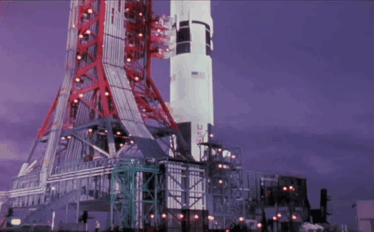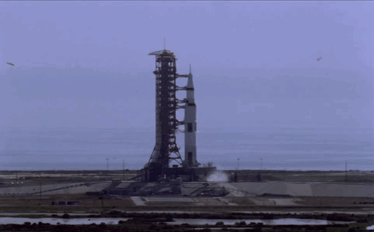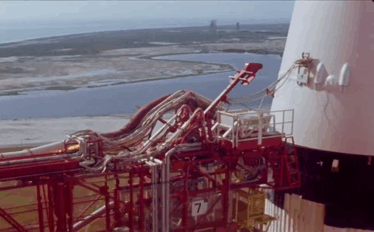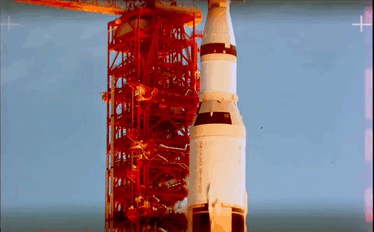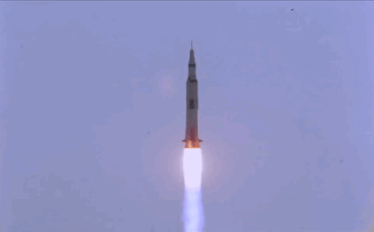Beautiful! Would Like To Visit All Of These Places Someday
Beautiful! Would like to visit all of these places someday <3









World’s largest salt flat: Salar de Uyini, Bolivia
More Posts from Catchconstellations-blog and Others
My Constellation
I was born with stars in my eyes.
I mean this in a very literal sense! I was born in an island village that didn’t have any electricity, on a clear moonless night when millions of bright stars unfurled across the dark sky. And (according to my baby pictures) my hospital cradle was right next to the window which afforded a wide view of the ocean waves and – yep, that’s right – the stars. One of my earliest memories is that of the stars, though I’m not sure if that is from when I was a baby, or when I was slightly older.
Nevertheless, the night sky and its bright inhabitants have been constants in my life for as long as I can remember. From as early as my toddling years, I would always make it a point to my parents to let me stay outside long enough to stargaze. I didn’t know why I was so fascinated with the night sky – it was just instinctive to look up and be in wonder. My love for the stars became so apparent that my grandparents, aunts, and uncles decided to save enough money to buy me a secondhand telescope, a gift that I cherished until I had to move to the United States and leave it behind to my younger relatives.
That telescope opened up a new world for me, one where I only had to look through a pair of simple lens to excitedly meet my nighttime friends face-to-face. While the telescope wasn’t very advanced, it was strong enough to show me the faint outlines of neighboring planets, the tail-ends of occasional comets, and the blurry but beautiful glows of twinkling stars. “There’s stuff out there! STUFF!” I remember saying to my family after my first time looking through the telescope, “there’s a bunch of stuff! So much stuff!”
From there, it was inevitably easy to fall in love with outer space and all of its complications and mysteries. My curiosity and questions about the “stuff” I saw grew in leaps and bounds, propelling me to – in essence – attack our local library to get my hands on anything related to space. I was overjoyed to see an entire shelf dedicated to space science and astronomy. But when I finished devouring the texts there a few weeks later, I was devastated. Surely there was more to read, more to learn more out there?
Can you imagine, then, how I reacted when I was told that my parents and I were moving to America? The America that had sent people to the moon, built incredible spacecrafts and satellites that were currently circling the globe in low orbit, and helped found the International Space Station? I was ecstatic, and my hopes for the future far outweighed my reservations about leaving the only home I had ever known.
If there were any reservations, though, they disappeared the moment I woke up at some point during the 22-hour flight, looked out my tiny plane window, and saw with wide eyes…
… the stars – right there – right in front of me – right within my reach. At eight years old, I genuinely thought the plane was flying in a sea of stars, and kept my face mushed against the glass until a plane attendant asked me to close the window (I did close the window, but I opened it again after she left.)
It’s funny, looking back at that starry-eyed eight-year-old. I want to tell her that there’s only so much more to look forward to. I want to tell her that when she’s ten, she’s going to visit a place called Kennedy Space Center and firmly declare to everyone in the tour group that she will become an astronaut one day. I want to tell her that when she’s thirteen, she’ll visit another place called the Orlando Science Center and peek through an enormous telescope that will show her the distant planet of Saturn in color, and she’ll be so shocked that she’ll ask if the picture was a sticker on the lens. I want to tell her that when she’s eighteen, she’ll gain two mentors who will encourage her to pursue her love for the stars, and help her get started on the path to getting there… I want to tell her that the next eleven years won’t be easy, and there will be times when she’ll feel as if the stars could never be more far away or unreachable.
But I think she’ll end up just fine. She was born with stars in her eyes, after all.
No pessimist ever discovered the secret of the stars, or sailed to an uncharted land, or opened a new doorway for the human Spirit.
Helen Keller

(via the-wolf-and-moon)
United Arab Emirates’ Plan for a Mars City
It seems that everyone is really starting to get into the race to Mars! The project, dubbed “Mars 2117”, envisions a completely functioning human community on the surface of the red plane by year 2117.
According to the Emirates Mars Mission main website, Mars 2117 is a specific goal that the UAE hopes will encourage international cooperation in space exploration and scientific discovery. This ambitious project also falls under a larger umbrella of aerospace goals that the UAE has set out since 2014 when they first showed interest in entering the space industry. Some of these goals include sending an unmanned probe to Mars by 2021, studying Earth’s atmosphere using advanced technology, and collaborating with scientists worldwide.
The Mars 2117 project is an incredible vision, one that I am excited to see grow and gain more attention in the years to come. While there are many initiatives around the world that aim at reaching the famous red planet, this is the first time that an entire nation has so publicly announced support and planning for such an enormous long-term project, and looks to be moving with forward momentum.
I can only wonder what other nations and organizations are thinking about this concept, as well as marvel at how much attention the space industry has garnered recently. It seems as if there are new technical discoveries and achievements being made everyday, and it doesn’t look like the space race is stopping. With SpaceX and NASA already testing advanced aero-spacecraft for future launches, and the Dutch Mars One Mission currently under progress, Mars 2117 certainly adds more fuel to the fire.
A century is certainly a long time and anything can happen between 2017 and 2117, but I can’t wait to see what happens until then.
Hey Dianne. I love love love this theme! It is sooo cool. I have no idea how you did it (was it witchcraft?!?!). I love that you have this calming music playing as well. everything is just awesome --Jennifer Holden
Hi Jennifer, thank you so much for visiting my blog! The theme took forever to edit and format, but I think it’s totally worth it :D
Historic Milestone in Space Flight Technology
Today, March 30, 2017, marks a significant and critical step in making affordable space travel more possible than ever.
Last April, the whole scientific community worldwide was watching as Elon Musk’s SpaceX successfully launched and landed the Falcon 9 rocket booster, proving for the first time in space flight history that it was possible to save and collect rockets after being launched into space. This March, SpaceX aims to up its standards by relaunching and re-landing the same rocket booster, which will deliver a communications satellite into orbit for a Luxembourg-based telecommunications company.
Why is this important? Simply put, rocket boosters are the most expensive part to build for any type of rocket. While SpaceX claims to have the most affordable rocket launches in the world, solidifying the concept of 100% reusable rocket boosters can save space programs $18 million per launch and open more doors for cost-effective commercial space travel.
If 100% reusable rocket boosters become a reality, the cost of launching rockets, experiments, and people into space can be significantly lowered to the point where non-scientific commercial space travel can be a common occurrence.
I can only wonder, then, how much and how far this development will impact not only the space industry, but the whole world itself. If this pushes through, there can be few excuses, then, for not recognizing the potential in looking beyond our own orbit and planet. With incredible scientific progress and discoveries happening almost every day, I think it’s only a matter of time before everyone sets their sights on the stars and starts pushing for interstellar travel.
We are no longer limited to our own solar system, and the possibilities that come with recognizing and answering to that are as unfathomable as space itself.
Thoughts on the ISS Water Systems
Recently, I was asked by my research mentor to conduct a literature review on the drinking water systems aboard the International Space Station. Let me say this: the technology and the people aboard the ISS really know how to recycle water!
Here are some cool facts I discovered while doing this research:
- Sweat, pee, and tears are all recycled through intensive chemical and physical processes
- There is no way to recycle/reuse solid waste like brine yet, so it is packaged and sent back down to Earth through payloads
- The ISS has a motherboard-like program called the Environmental Control and Life Support System (ECLSS) that basically outlines in detail all the processes that need to be in order to sustain life aboard the spacecraft
- The ISS is currently able to support six living crewmembers aboard, but it is not 100% sustainable because chemical resources (oxygen, water, etc.) are invariably lost over time
Just some things I found interesting. I was glad to do this kind of literature review because it gives me an outlook on how much progress we still need to make in trying to achieve long-term space travel and habitation.

Exploration is wired into our brains. If we can see the horizon, we want to know what’s beyond.
Buzz Aldrin
-
 asimozouzouna reblogged this · 10 months ago
asimozouzouna reblogged this · 10 months ago -
 arunecstanem liked this · 1 year ago
arunecstanem liked this · 1 year ago -
 nowayjae reblogged this · 4 years ago
nowayjae reblogged this · 4 years ago -
 astroblackk reblogged this · 4 years ago
astroblackk reblogged this · 4 years ago -
 astroblackk liked this · 4 years ago
astroblackk liked this · 4 years ago -
 winkswordswonder liked this · 4 years ago
winkswordswonder liked this · 4 years ago -
 themasterpupil reblogged this · 4 years ago
themasterpupil reblogged this · 4 years ago -
 thoughtless-daydreams reblogged this · 4 years ago
thoughtless-daydreams reblogged this · 4 years ago -
 piedrapapel liked this · 4 years ago
piedrapapel liked this · 4 years ago -
 vixen-of-stars reblogged this · 4 years ago
vixen-of-stars reblogged this · 4 years ago -
 sprinkletoe liked this · 5 years ago
sprinkletoe liked this · 5 years ago -
 silkirose liked this · 5 years ago
silkirose liked this · 5 years ago -
 penn-and-parchment reblogged this · 5 years ago
penn-and-parchment reblogged this · 5 years ago -
 mychemikuromance reblogged this · 5 years ago
mychemikuromance reblogged this · 5 years ago -
 mychemikuromance liked this · 5 years ago
mychemikuromance liked this · 5 years ago -
 wrenfea reblogged this · 5 years ago
wrenfea reblogged this · 5 years ago -
 dragon-overlord-yuu reblogged this · 5 years ago
dragon-overlord-yuu reblogged this · 5 years ago -
 magicandmysterymanor reblogged this · 5 years ago
magicandmysterymanor reblogged this · 5 years ago -
 magicandmysterymanor liked this · 5 years ago
magicandmysterymanor liked this · 5 years ago -
 lostchasingsilver liked this · 5 years ago
lostchasingsilver liked this · 5 years ago -
 invidia1988 reblogged this · 5 years ago
invidia1988 reblogged this · 5 years ago -
 know-moor reblogged this · 5 years ago
know-moor reblogged this · 5 years ago -
 neatscratch liked this · 5 years ago
neatscratch liked this · 5 years ago -
 ceebee-eebee liked this · 5 years ago
ceebee-eebee liked this · 5 years ago -
 bowtomypointlesswords liked this · 5 years ago
bowtomypointlesswords liked this · 5 years ago -
 luminouslumity reblogged this · 5 years ago
luminouslumity reblogged this · 5 years ago -
 luminouslumity liked this · 5 years ago
luminouslumity liked this · 5 years ago -
 anametbd reblogged this · 5 years ago
anametbd reblogged this · 5 years ago -
 laundry-day-again liked this · 5 years ago
laundry-day-again liked this · 5 years ago -
 yourkpopidolsucks reblogged this · 5 years ago
yourkpopidolsucks reblogged this · 5 years ago -
 ferago20 liked this · 5 years ago
ferago20 liked this · 5 years ago -
 runa10969 liked this · 5 years ago
runa10969 liked this · 5 years ago -
 cloechou liked this · 5 years ago
cloechou liked this · 5 years ago -
 plipaya liked this · 5 years ago
plipaya liked this · 5 years ago -
 stealingpotatoes liked this · 5 years ago
stealingpotatoes liked this · 5 years ago -
 the-lady-of-lothlorien liked this · 5 years ago
the-lady-of-lothlorien liked this · 5 years ago -
 ships-and-shitty-decisions liked this · 5 years ago
ships-and-shitty-decisions liked this · 5 years ago
CONSTELLATION: (noun) Group of stars that form a recognizable pattern to which a mythological or earth-based name is assigned Pattern of stars whose name or is associated with different stories and meanings Story told by stars connected across the infinite night sky, overlapping with countless other stories that have unfolded from ancient supernovas, whose imaginary lines urge our eyes up from the chaos of the world around us to the unknown vastness in which we are but a speck of dust -------- Hi! I’m a starry-eyed astrogeek named Dianne who loves absolutely everything that has to do with the stars and outer space. When I’m not studying or preparing to take over NASA one day, you can find me trying to stargaze despite city lights or happily planning my next road trip.
35 posts
